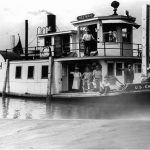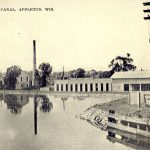2020 Locks Schedule
Plans are underway to open the locks for the 2020 navigation season, but Governor Evers safer at home order will delay the official opening until Saturday, May 30. Originally several of the busier locks were scheduled to be open by mid-May, but the official opening to full navigation is tentatively scheduled for 5.30.20.
“As a state authority, we need to adhere to the Governor’s orders,” said CEO Jeremy Cords. “We also need the appropriate amount of time to interview and hire lock tenders for the season.” Cords added that as conditions changes due to coronavirus, the opening date may change.
The locks typically operate with 1-5 lock tenders stationed at the nine locks that will be open this summer. Those locks are; the four Appleton locks, Cedars, Little Chute, Combined Locks, Little Kaukauna, and De Pere. The five locks in Kaukauna are scheduled to open in 2021 pending repairs to the Memorial lift bridge in Kaukauna.
Blog – Fox Locks
http://foxlocks.org/2020/05/07/2020-locks-schedule/






















